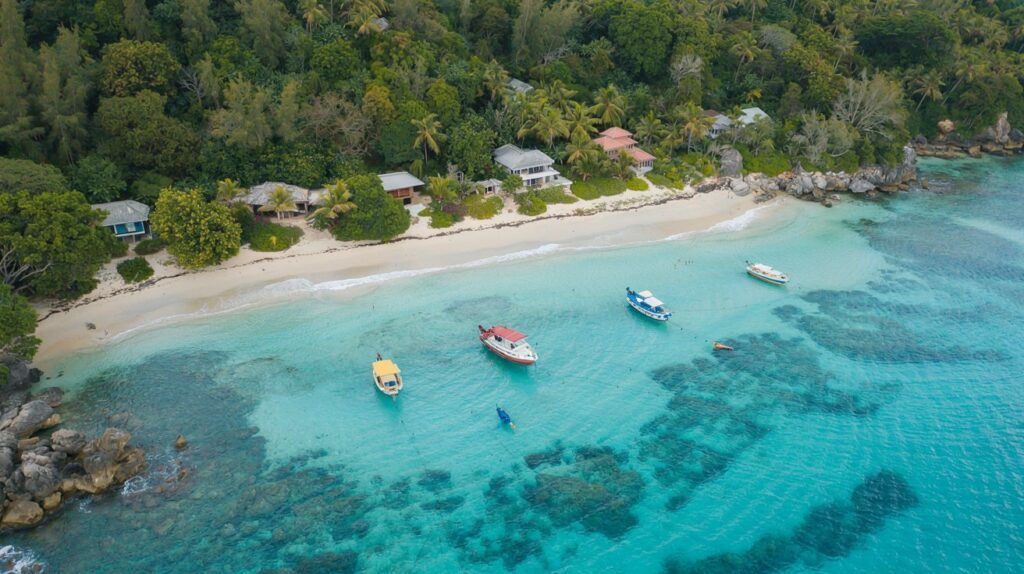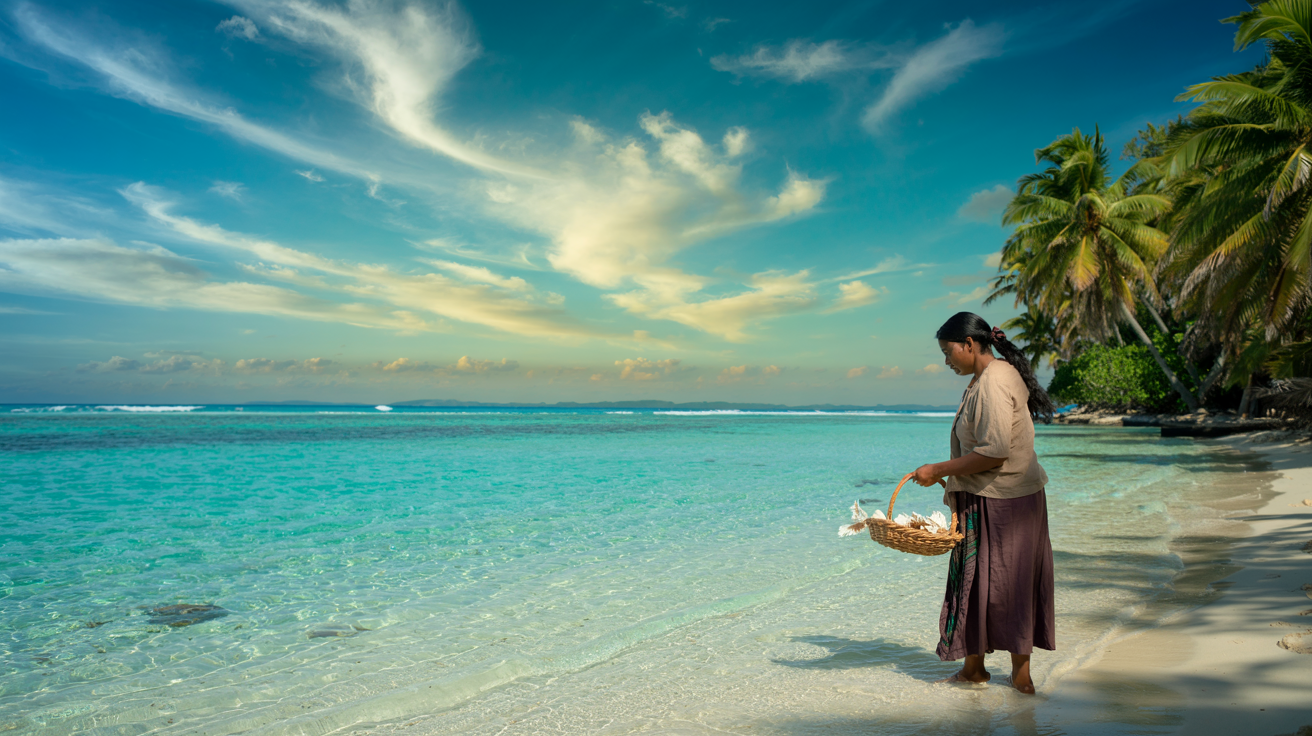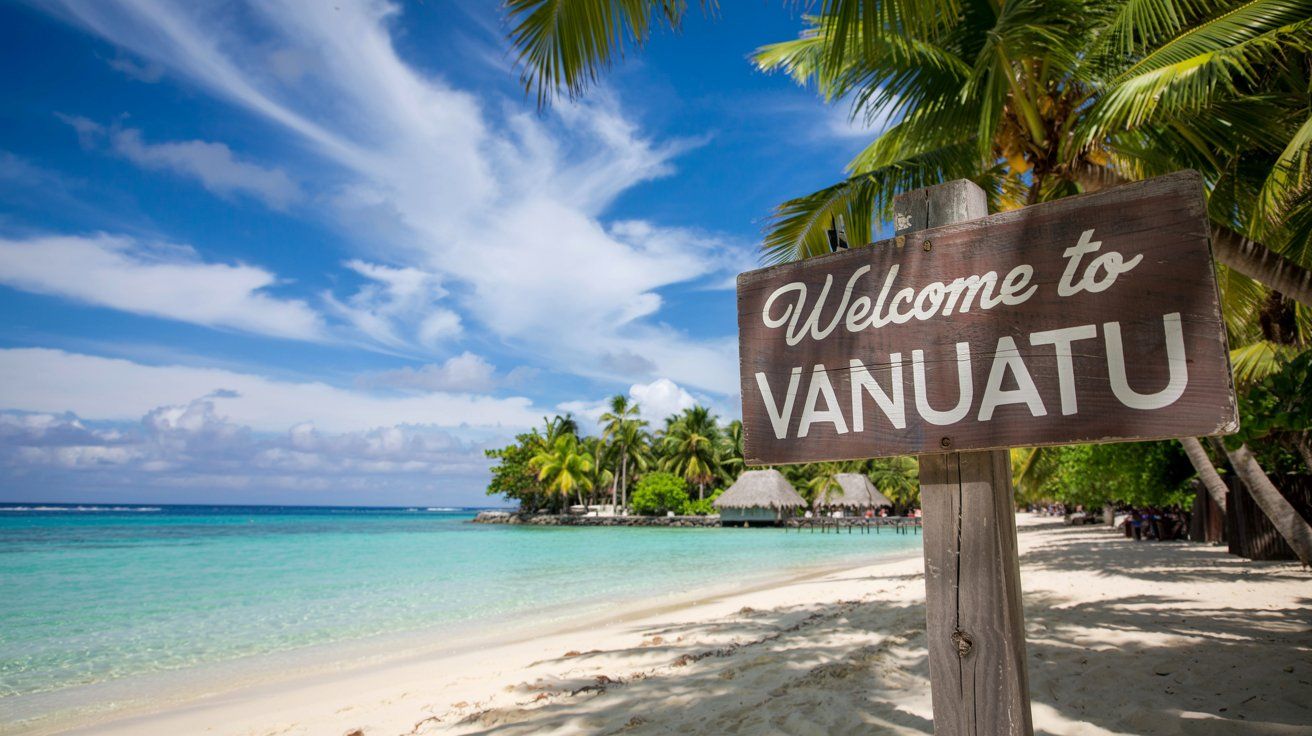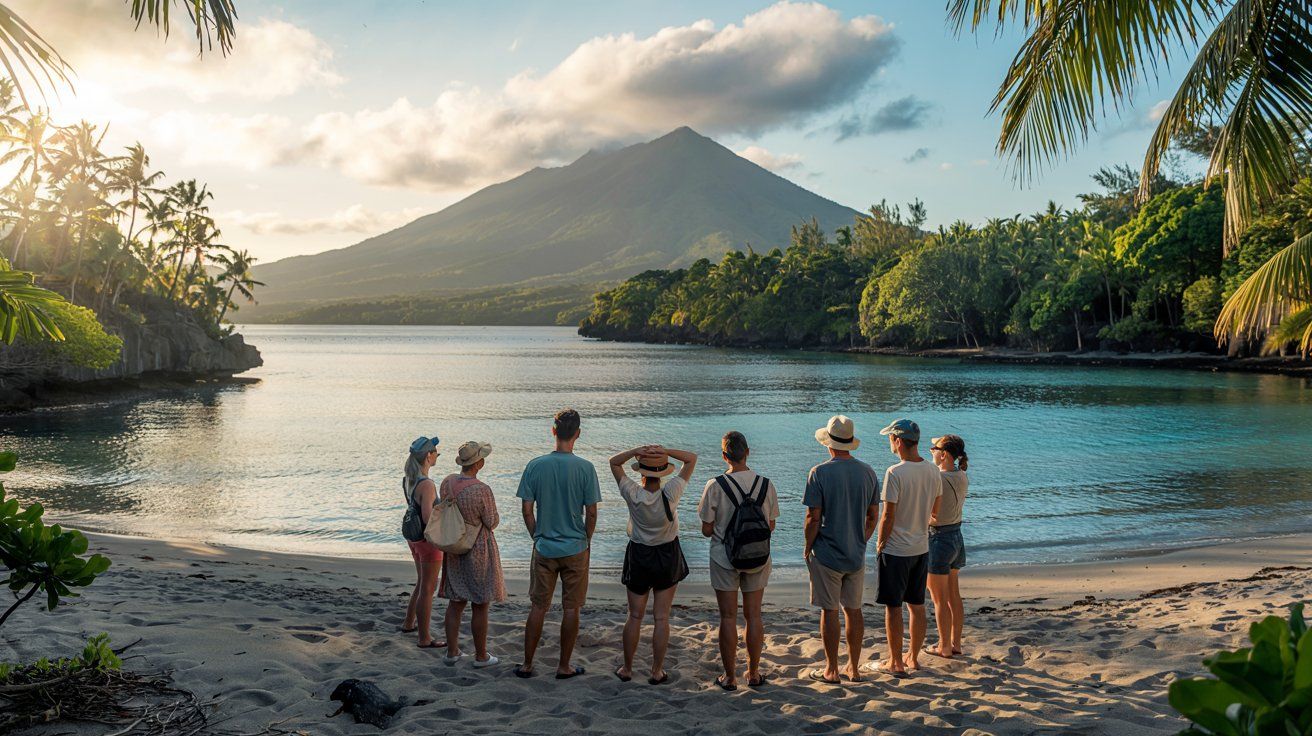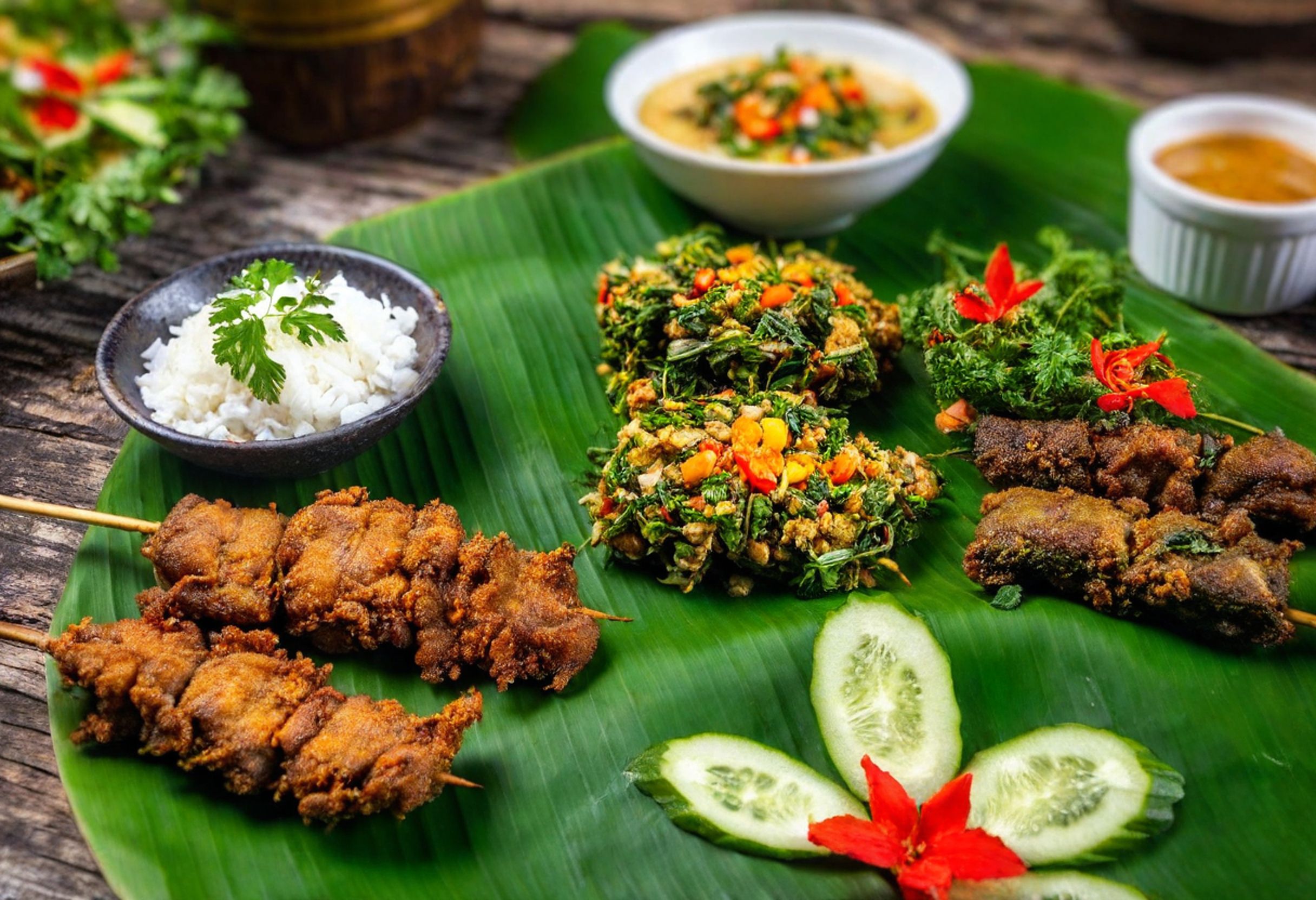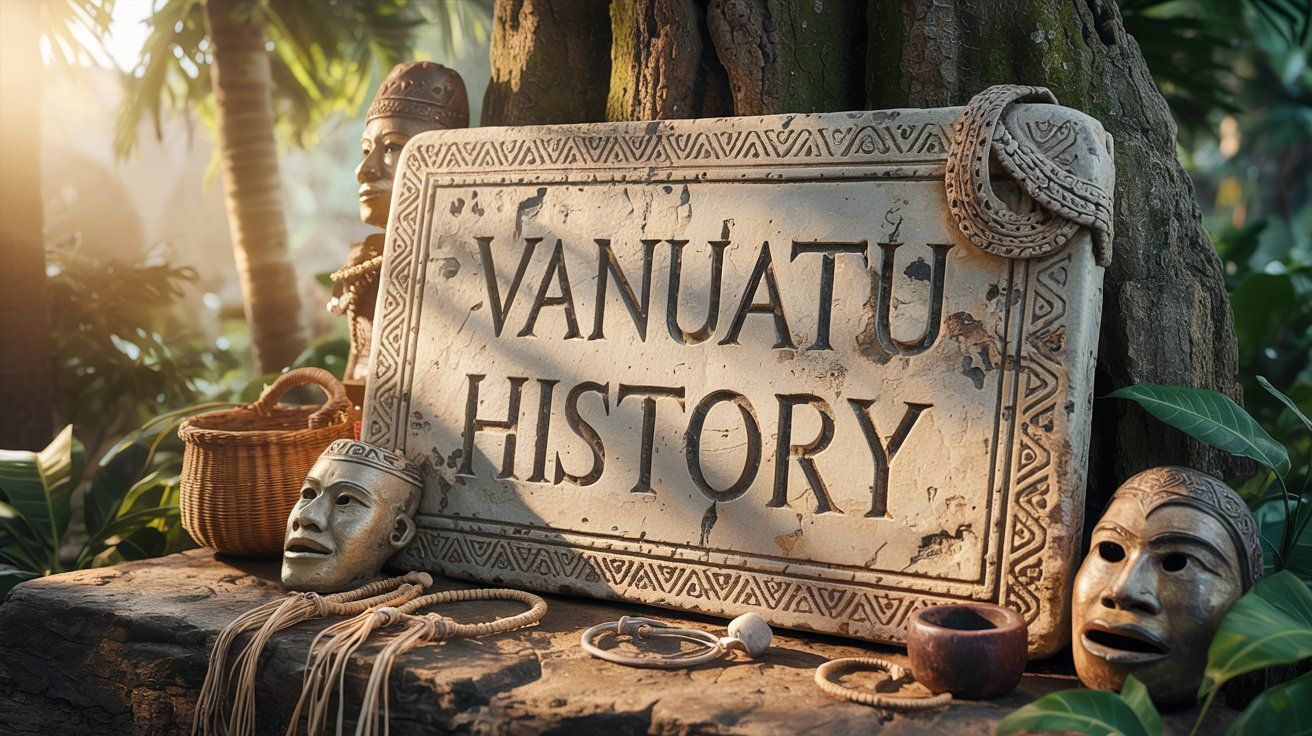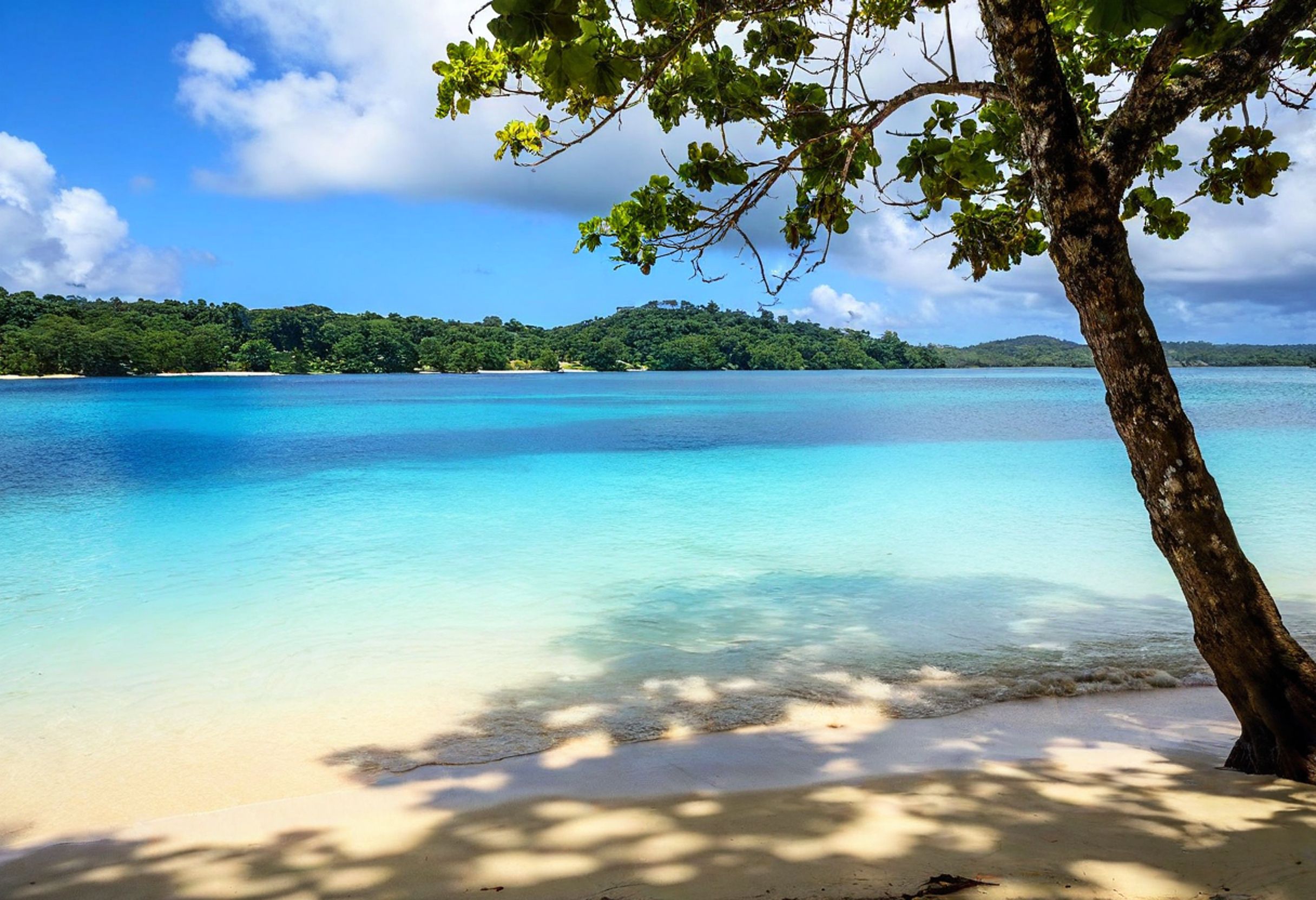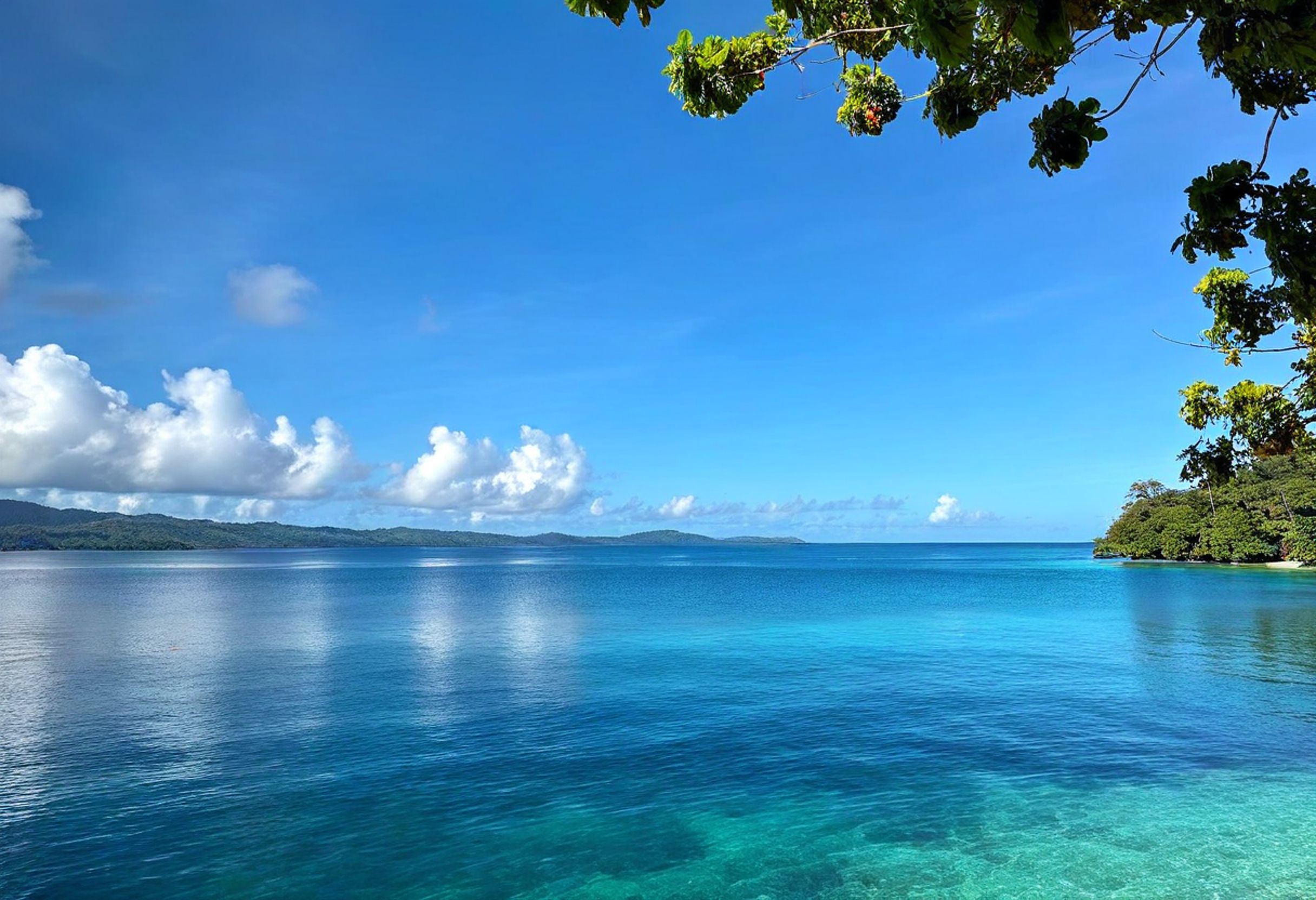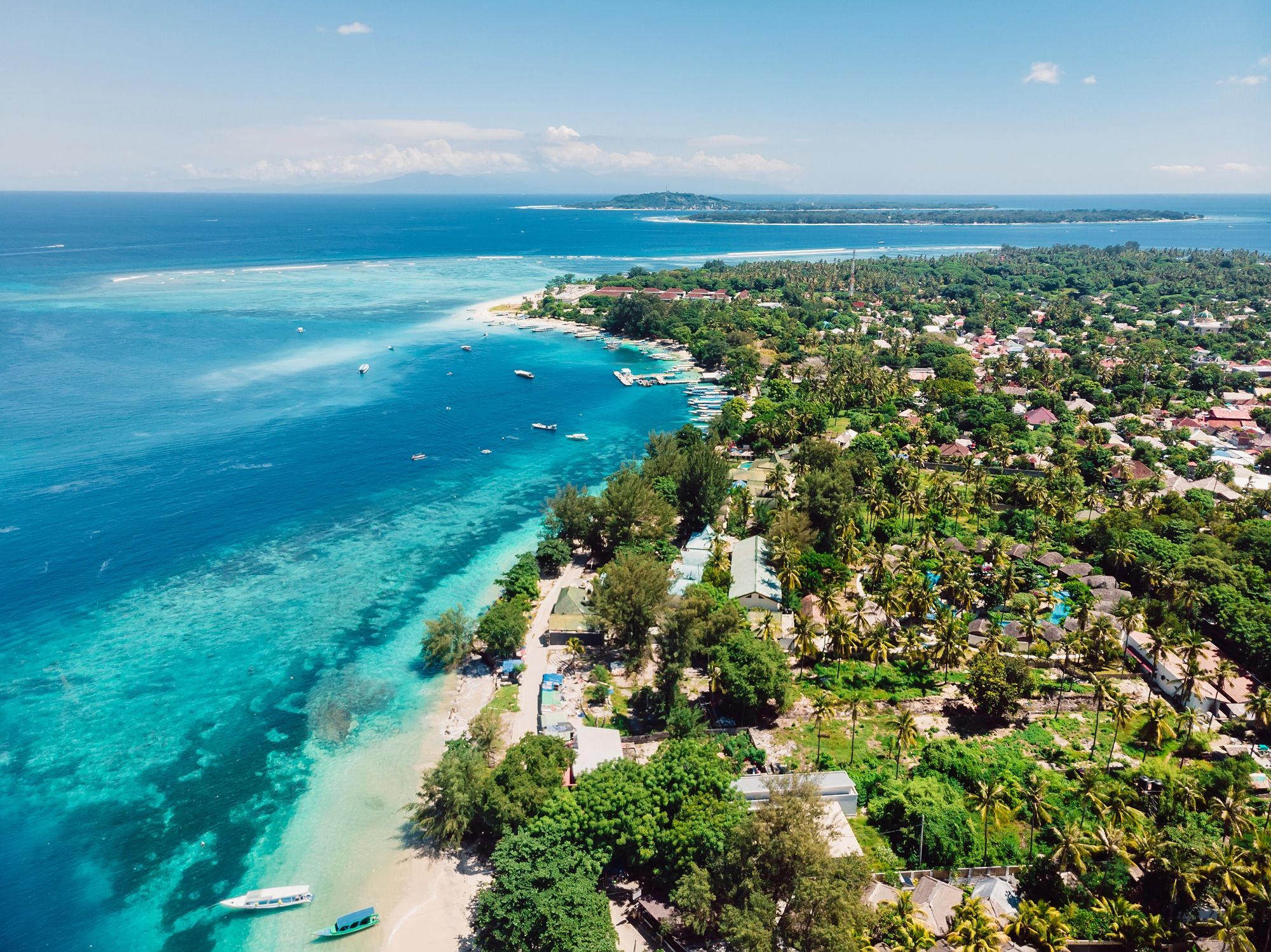Welcome to Malekula, Vanuatu’s second largest island and honestly, a hidden gem in the South Pacific. Over 30 different languages echo across its communities, making Malekula one of the most culturally rich spots in the country. Travelers here get a rare chance to experience authentic Vanuatu, well away from tourist crowds. You’ll find secret cannibal sites, pristine reefs, and traditional villages that still hold onto centuries-old customs.
Visiting Malekula feels like stepping into a world where ancient traditions are still part of daily life. The island’s dotted with beautiful offshore islets, challenging multi-day coast-to-coast treks, and villages that you’ll only reach after a long day’s walk. Unlike the more developed Port Vila or the busy volcanic tours on Tanna, Malekula reveals a different side of Vanuatu—one where life moves at a slower, more natural rhythm.
From overwater bungalows to beachfront resorts, find your perfect stay in this island nation of more than 80 islands. Instant booking with best price guarantee!
Browse Accommodations Now
The waters around Malekula are alive with coral reefs, ideal for snorkeling and diving. Inland, thick forests and rugged terrain wait for those up for an adventure. During your stay, you might catch a local festival, see traditional dances, or simply chat with villagers who genuinely welcome respectful visitors. If you’re after an unspoiled South Pacific experience, Malekula is well worth a few days on your itinerary.
Why Visit Malekula Island
Malekula Island gives travelers a rare window into authentic Vanuatu without the usual crowds. As the country’s second-largest island, it mixes cultural depth with natural beauty that most visitors never see.
Authentic Cultural Experience
Malekula stands out for its incredible diversity—over 30 languages get spoken here, reflecting a rich cultural tapestry that’s hard to find elsewhere.
If you stay in a village, you’ll meet local families and actually join in with daily life. Locals often invite you to help with gardening, fishing, or food prep, and you’ll pick up traditions just by being there.
Cultural ceremonies on Malekula are the real deal: unique dances, music, and rituals have survived for generations. Unlike the polished shows you’ll see elsewhere, these moments feel honest and alive.
You might meet traditional artists who carve masks, craft wooden pieces, or weave baskets using skills passed down for centuries. Most are happy to show you their work and share the stories behind it.
Natural Beauty and Adventure
Malekula’s rainforests are lush and wild—perfect for waterfall hikes or just wandering. Local guides know the secret swimming holes and scenic spots you’d never find on your own.
The coastline shifts from quiet bays to steep cliffs, and there’s no shortage of snorkeling spots full of colorful marine life. Around the Maskelyne Islands, the water’s so clear it feels unreal.
Hiking trails here range from easy coastal walks to tough mountain treks, each showing off a different side of the island’s landscape.
Wildlife lovers will have a field day. Rare birds and other creatures thrive here because development hasn’t really touched much of the island.
Unspoiled Island Life
Life on Malekula moves at its own pace—nature sets the schedule, not the clock. It’s a good place to slow down and just enjoy the basics.
You’ll mostly stay in simple guesthouses or bungalows, usually run by local families. They might not offer luxury, but you’ll get genuine hospitality and know your money’s helping the community.
Meals are all about fresh tropical fruit, seafood straight from the ocean, and root crops grown nearby. Many hosts take pride in serving food picked right from their gardens.
Getting around means hopping in shared trucks, taking a boat, or sometimes just walking between villages. Honestly, the journey becomes part of the adventure.
Getting to Malekula
Reaching Malekula takes a bit of planning. Transport options are limited but generally reliable, and you’ve got a few ways in depending on your timing and budget.
Flights and Entry Points
Air Vanuatu runs regular flights to Malekula from Port Vila on Efate and from Luganville on Espiritu Santo. Flights aren’t daily, so you’ll want to check the schedule before booking. Norsup Airport is the main entry point up north, and Lakatoro—the island’s administrative center—is close by.
Flights from Port Vila take about an hour, and from Santo, it’s only 30 minutes. Tickets usually cost between 10,000-15,000 VUV ($85-130 USD), depending on the season and how early you book.
Traveling light is a must—small planes have strict luggage limits. The airport’s pretty basic, so bring your own water and snacks.
Travel via Efate and Espiritu Santo
Most travelers arrive via Efate (Port Vila) or Espiritu Santo, the main transport hubs in Vanuatu. Both islands have international airports with flights from Australia, New Zealand, and other Pacific countries.
Cargo boats run daily between Santo and Malekula. The trip takes 3-4 hours (weather permitting) and costs about 2,000-3,000 VUV ($18-27 USD). Boats usually leave in the morning.
From Port Vila, shipping services are less frequent. The sea journey is longer (10-12 hours), but you’ll get some pretty amazing views of the islands along the way.
Public trucks connect Lakatoro to other villages. Hitchhiking is common and generally safe—locals are often happy to give you a lift.
Cruises and Private Charters
Some South Pacific cruise lines stop at Malekula during their Vanuatu routes, usually docking at Lakatoro or Norsup for day trips.
If you want more freedom, private yacht charters from Port Vila or Santo can get you to Malekula and the nearby Maskelyne Islands. A few companies offer multi-day sailing packages.
You can charter a small plane for a group, but it’s pricey. The upside? You’ll reach remote airstrips like Southwest Bay that regular flights don’t serve.
If you visit in the dry season (May-October), transport is more reliable. Heavy rains in the wet season can mess up schedules, so it’s smart to build in a buffer day or two for delays.
Transportation Around the Island
Getting around Malekula isn’t always straightforward. The island’s infrastructure is basic, but you’ve got a few transportation options to help you explore.
Modes of Internal Transport
Minibuses are the main public transport, especially around Lakatoro and Norsup. These privately owned vans don’t run on a fixed schedule—just wave when you see one. Look for the “B” license plates.
You’ll find a few taxis in Lakatoro and Norsup, but not as many as on bigger islands. Always agree on the fare before you get in.
Boats are crucial for getting along the coast. Locals run “taxi boats” between villages, and prices depend on distance and fuel. Some offer boat hire for day trips to the smaller islands.
For short trips, walking is totally normal. Villages connect by footpaths that wind through some truly beautiful scenery.
Travel Tips for Rural Areas
Travel in rural Malekula gets trickier. Journeys take longer than you’d expect, and vehicles or boats leave when they’re full, not on a set schedule.
Whenever you can, arrange rides a day ahead—especially for longer trips. Your host can usually help you find a reliable driver.
Roads are mostly dirt and can turn to mud in the rainy season (November to April). Some villages are only reachable by boat or on foot, especially the really remote ones.
Pack light and use water-resistant bags. Boats can get splashy, and most vehicles don’t have air conditioning.
Even a few words of Bislama go a long way with drivers and boat operators. They’ll appreciate the effort, even if English is spoken.
Self-Drive and Local Guides
Renting a vehicle isn’t common, but a few guesthouses in Lakatoro and Norsup rent motorbikes. You’ll need a valid international driver’s license. If you go off the main roads, 4WD is a must.
Fuel can be hard to find outside Lakatoro and Norsup. Always fill up when you can, and bring extra for longer trips.
Hiring a local guide with a vehicle is a great way to get around and learn about the island. Guides usually charge 1,500-3,000 vatu per day, depending on where you’re going.
Elegant resorts, tropical villas, and vacation rentals with immediate confirmation. Experience a culture dating back to 1,300 BC in this breathtaking archipelago!
See Available Properties
Most guesthouses can connect you with a trusted driver who’ll double as a guide. It’s a good option for day trips to cultural sites or hidden beaches.
Don’t count on GPS—it barely works here. Old-school maps or local tips are your best bet.
Top Places to Visit in Malekula
Malekula’s attractions run the gamut from cultural sites to wild landscapes. The island mixes traditional village life with dramatic coastlines and historic places.
Lakatoro and Central Malekula
Lakatoro is the island’s main hub. You’ll find essentials like the National Bank of Vanuatu, a few stores, and a lively market where local farmers sell fresh produce—Monday and Friday mornings are the busiest.
The Malekula Cultural Center, right in Lakatoro, holds artifacts and info about the island’s many cultural groups. It’s small but worth a look before you head into the more remote areas.
Just outside town, you can wander through old coconut plantations. These places give you a glimpse into Malekula’s colonial past and the days when copra was king.
Norsup and Northern Regions
Norsup is your gateway to northern Malekula. Norsup Airport connects you to Port Vila, so this area’s easier to reach than the south.
From Norsup, you’ll find guides who can take you to traditional villages where woodcarvers make ceremonial masks and tamtam drums. Local guides help make sure you follow the right cultural protocols.
The Dog’s Head Walk, starting near Norsup, is a proper jungle hike. It leads you to highland villages where you can really experience traditional life.
You’ll come across secret cannibal sites scattered through the north. These places are loaded with history. Always go with a guide who can explain the context and help you visit respectfully.
East Coast Exploration
The east coast has several small islands you can reach by boat. Atchin and Uripiv islands offer a look at traditional life, with even fewer tourists than the mainland.
If you like fishing, the east coast is a dream. Local fishermen sometimes take visitors out to try old-school fishing methods or just enjoy the clear waters.
The Litz Litz area is fantastic for snorkeling—pristine reefs sit just offshore, and the water’s usually calm and clear. You’ll see plenty of colorful fish and healthy coral.
Driving along the east coast, you’ll get sweeping ocean views. Black sand beaches pop up along the way, perfect for a quiet break.
Immersive Cultural Experiences
Malekula’s probably the best place in Vanuatu for authentic cultural encounters. The island keeps ancient traditions alive, giving visitors a real connection to Ni-Vanuatu heritage.
Small Nambas and Big Nambas Tribes
Two main cultural groups call Malekula home—the Small Nambas and Big Nambas. Their names come from the size of the traditional penis sheaths men wear.
The Big Nambas live up north and keep to a more conservative lifestyle. You’ll need to arrange guided visits through local tour operators. When you visit, you’ll spot their distinctive large sheaths made from woven leaves.
The Small Nambas are based in central and southern Malekula. They wear smaller sheaths. Many villages welcome day visitors who want to see daily life up close.
Both groups hold onto unique customs, from traditional cooking to crafts and herbal medicine. Village visits usually cost 1,000-2,000 vatu per person (about $9-18 USD).
Traditional Dancing and Sand Drawing
Malekula’s cultural performances bring rhythmic dancing to life, with bamboo and wooden instruments setting the beat. Dancers show off elaborate costumes made from leaves, feathers, and shells—nature’s own wardrobe.
The Rom dance stands out here. Masked dancers channel ancestral spirits in a ceremony full of energy and meaning. Traditionally, people held this performance during big life events or seasonal festivals.
Sand drawing is another tradition that’s honestly pretty mesmerizing. Artists use a single, unbroken line to create intricate geometric patterns right in the sand. These designs aren’t just for show—they carry stories and help pass down knowledge.
If you want to see both dancing and sand drawing up close, local guides can set it up. Some villages host regular performances for visitors, but in other places, you’ll need to book ahead.
Cannibalism History and Relics
Malekula’s past includes ritual cannibalism, a practice that ended in the early 20th century. Several protected sites keep this controversial history alive for those curious enough to visit.
At these cannibal sites, you’ll find stone structures, ritual spaces, and sometimes even skeletal remains. The site near Lakatoro is the easiest to reach, but others are hidden deeper in the jungle and need a guide.
Locals consider these sites sacred, so visitors need to approach them with respect. Guides share the cultural context, explaining how these practices tied into complex beliefs—not just violence or aggression.
Some places don’t allow photography, so check before snapping pictures. Guided tours to these sites usually cost 2500-3500 vatu ($22-31 USD), and you’ll get plenty of local insight along the way.
Where to Stay: Accommodations in Malekula
Malekula has a variety of accommodations that combine island charm with different levels of comfort for all kinds of travelers.
Beach Bungalows and Guesthouses
Nawori Sea View Bungalows is a favorite for many, offering ocean views and a real taste of island life. Locals build these bungalows, so you get an authentic Vanuatu experience—though don’t expect luxury.
Nabelchel Bungalows is another spot with plenty of character. Built using traditional methods and materials, these bungalows immerse you in local culture from the moment you arrive.
Most beach accommodations serve meals on-site, using fresh local ingredients. After a day out, it’s nice not to have to wander far for dinner.
Local Tip: If you’re staying in beach bungalows, pack insect repellent. The natural setting means mosquitoes—especially as the sun goes down—are just part of the deal.
Luxurious Stays and Villas
Malekula doesn’t have the big resorts you’ll find elsewhere in Vanuatu, but there are a few upscale options if you want more comfort. Expect:
- Private rooms with en-suite bathrooms
- Better amenities than basic bungalows
- More dependable electricity and hot water
- Upgraded dining
- Help arranging tours and activities
Malekula Holiday properties offer the island’s top-end comfort. “Luxury” here is relative, but you’ll get the best available amenities without losing the island’s unique character.
Some places are built on stilts in the traditional style but sneak in plenty of modern comforts—a pretty great combo if you ask me.
Family-Friendly and Unique Options
Families can find plenty of suitable spots in Malekula. Many guesthouses have larger rooms or connecting bungalows, which work well if you’re traveling together.
What’s really cool about Malekula is the chance to stay somewhere genuinely unique. Some places offer cultural extras like:
- Traditional cooking classes
- Craft workshops
- Cultural performances
- Village tours with local guides
- Language lessons
Most family accommodations come with mosquito nets and fans, so you won’t be swatting bugs all night. Properties here are usually small—often less than 10 rooms or bungalows—so you’ll get a personal touch.
You really should book ahead. There aren’t a ton of options, and with over 30 language groups on the island, staying in different areas lets you soak up Malekula’s wild cultural diversity.
Cuisine and Local Delicacies
Malekula’s food scene mixes traditional Ni-Vanuatu cooking with fresh ingredients straight from the land and sea.
Easy booking across stunning accommodations from luxury resorts to eco-friendly retreats. This Y-shaped archipelago offers pristine beaches, active volcanoes, and world-class diving!
Secure Your South Pacific Getaway
Ni-Vanuatu Specialties
Local meals center around crops grown in village gardens. Yams are a big deal, both at the table and in ceremonies. You’ll see taro and manioc in traditional dishes all the time.
Lap-lap is the island’s signature dish. Locals grate yam, taro, or manioc, wrap it in banana leaves with coconut cream, and cook it in an earth oven. The result? A hearty, pudding-like meal, often served with chicken or flying fox.
Coconut shows up everywhere—coconut milk for flavor, grated coconut for texture. Island women know a hundred ways to prepare it, and honestly, it’s delicious.
Fruits like papaya, bananas, and citrus are everywhere. You’ll spot them at roadside stands and in markets, usually much cheaper than anything imported.
Kava Experience
Kava is woven into Malekula’s culture. Locals make this traditional drink from the kava plant’s roots, pounding them into powder and mixing with water.
You’ll find kava in small bars called “nakamals,” which open in the late afternoon. Men usually prepare the kava, sticking to old-school methods.
The drink tastes earthy and bitter, with a mild numbing effect in your mouth. It relaxes you, but it’s not alcoholic—just a different kind of buzz.
When you try kava, follow local customs:
- Clap once before drinking
- Down the whole shell in one go
- Stay quiet after you drink
Many villages now offer kava ceremonies for visitors. It’s a great way to learn about tradition and support local communities.
Seafood and Farm-to-Table Options
On Malekula’s coast, seafood is king. Local fishermen bring in their catch daily, so what you eat is about as fresh as it gets.
Popular catches include:
- Reef fish like snapper and grouper
- Lobster
- Crab
- Prawns
- Coconut crab (when in season and allowed)
You’ll often get fish grilled or cooked in coconut milk. Coconut crabs are a treat, but they’re protected and only available in certain seasons.
In villages, meals are basically farm-to-table—though no one uses the term. Ingredients come straight from the garden to your plate, with almost no travel in between.
In Lakatoro, you’ll find a small butchery for fresh meat, and the local market sells fruits and veggies picked that same morning.
Outdoor Activities and Adventures
Malekula is packed with outdoor adventures for every kind of traveler. The island’s wild landscape sets the scene for water sports, jungle hikes, and traditional fishing.
Water Sports and Lagoon Exploration
Along Malekula’s coast, calm lagoons make swimming and snorkeling easy, especially on the east side. Clear water reveals coral reefs and plenty of colorful fish just offshore.
Kayaking is a relaxing way to check out hidden coves and tiny islets. Local operators rent kayaks by the hour or day if you’re up for a paddle.
Scuba divers will find plenty to explore, with visibility often reaching 30 meters. Some top sites include:
- North Malekula Reef – Sea turtles and reef sharks hang out here
- Eastern Lagoon – Good for beginners, with gentle currents
- Coral Gardens – Bursting with vibrant coral and tropical fish
Stand-up paddleboarding is catching on, too. Several guesthouses now rent boards if you want to give it a go.
Hiking and Jungle Treks
Malekula’s jungle hides a network of trails for both newbies and seasoned hikers. Many paths wind through traditional villages, so you get a real sense of local life along the way.
The Bushman Trail is a favorite. It’s a day-long trek through thick rainforest, ending at hidden waterfalls. Malampa Travel guides can set it all up.
If you’re after a challenge, try a multi-day hike across the island. You’ll get epic views and meet plenty of locals. For these trips, you’ll need:
- A local guide (required for cultural sites)
- Good boots
- Lots of water
- Insect repellent
Waterfall hikes are especially dramatic during the wet season (November–April), when the falls are at their best.
Fishing Experiences
Fishing is part of daily life here, and visitors can join in with local guides. Hand-line fishing from small boats is both fun and likely to land you dinner.
Some locals still spearfish the traditional way and might show you how in shallow water. It takes some swimming, but it’s a real island experience.
A few villages run deep-sea fishing charters, targeting tuna, mahi-mahi, and other big fish. You can book half-day or full-day trips, and they’ll provide all the gear.
River fishing in freshwater streams offers something different, and some guesthouses can arrange it if you ask in advance.
Practical Information for Travelers
If you’re planning a trip to Malekula, there are a few things you’ll want to know about money, weather, and safety to keep your visit smooth and stress-free.
Currency and Money Matters
The Vanuatu vatu (VUV) is the currency you’ll use everywhere on Malekula. Bring cash—ATMs are rare here. There’s one in Lakatoro, but sometimes it’s out of order.
Most places only take cash. Some larger hotels might accept credit cards, but honestly, don’t count on it. Cash is king.
Exchange your money in Port Vila before you head over. Rates are better in the capital than on the outer islands.
Daily costs are pretty reasonable:
- Budget stays: 3,000–5,000 VUV per night
- Mid-range guesthouses: 6,000–10,000 VUV per night
- Meals: 500–1,500 VUV
- Guided tours: 3,000–10,000 VUV
Weather and When to Visit
Malekula’s climate is tropical, with two main seasons:
- Dry season (May–October): Lower humidity, temps around 22–28°C (72–82°F)
- Wet season (November–April): More humidity, temps around 24–30°C (75–86°F)
The dry season is your best bet for visiting. It’s cooler, less humid, and there’s less rain to spoil your plans.
April–June and September–October are sweet spots—good weather and fewer crowds.
Cyclone season runs November to April. If you can, avoid traveling then, since storms can mess with transport.
Health and Safety Tips
Malaria exists on Malekula, so take antimalarial meds before, during, and after your trip. See your doctor at least a month ahead.
Pack insect repellent with DEET and wear lightweight, long sleeves for extra protection, especially at dawn and dusk.
Medical care here is basic, so bring a solid first-aid kit with:
- Painkillers
- Anti-diarrheal meds
- Bandages and antiseptic
- Any prescriptions you need
Stick to bottled water in villages, or bring a purifier if you’re heading somewhere remote.
Malekula is generally safe and locals are friendly. Just keep an eye on your stuff, like you would anywhere.
Nearby Islands and Excursions
Malekula has plenty to offer, but the nearby Vanuatu islands are worth a look if you’re up for more adventure. Each one has its own vibe and highlights, making them a nice addition to your trip.
Espiritu Santo
Espiritu Santo, the country’s biggest island, sits north of Malekula. You can fly there in under an hour, or take a boat—though flights are usually the better bet.
Champagne Beach is the star, with powdery white sand and water so clear it almost doesn’t look real. Million Dollar Point is another must-see, where you can snorkel around sunken WWII relics.
Santo’s blue holes are something else—bright blue freshwater springs hidden in the jungle. Matevulu Blue Hole is the easiest to reach and absolutely worth a swim.
Luganville, the main town, offers comfortable places to stay and makes a good base for exploring. The local markets are great for fresh fruit and meeting people—everyone’s got a story if you ask.
Efate and Port Vila
Efate Island is where you’ll find Port Vila, the capital of Vanuatu and the main spot for international arrivals. Flights from Malekula usually land here, and the trip only takes about 45 minutes—pretty convenient.
Port Vila feels a lot more urban than Malekula. There are plenty of restaurants, some serving international dishes and others sticking to local favorites. If you’re curious about daily life, definitely check out the central market. It’s lively, colorful, and packed with fresh produce, handmade crafts, and a healthy dose of local energy.
If you want to explore a bit, Mele Cascades is an easy drive from town and gives you that classic waterfall experience. For something quirkier, you can snorkel at Hideaway Island Marine Reserve and even send a postcard from the world’s only underwater post office—yes, that’s actually a thing.
Efate’s coastline is dotted with great snorkeling spots and beautiful beaches. If you don’t want to book a room, a lot of resorts will let you buy a day pass so you can enjoy the facilities, then head back to town.
Tanna Island Adventures
Tanna Island sits south of Efate and honestly, it’s hard not to be impressed by Mount Yasur volcano. You can stand right at the crater’s edge and watch eruptions—safely, but with your heart pounding a bit faster.
To reach Tanna, you’ll need to catch a flight from Port Vila; there aren’t direct flights from Malekula. Since it takes a bit of effort to get there, staying overnight just makes sense.
Find available hotels and vacation homes instantly. No fees, best rates guaranteed!
Check Availability Now
Tanna isn’t just about the volcano, though. The island’s traditional kastom villages still hold onto ancient customs, and visiting them feels like stepping into a different world. If you’re up for adventure, you can swim through an underwater entrance to reach the Blue Cave—definitely not your average beach day.
The black sand beaches on Tanna look dramatic against the bright blue water. White Grass Ocean Resort is a comfortable place to stay, and they’ll help you arrange tours if you want to see more of what the island offers.

